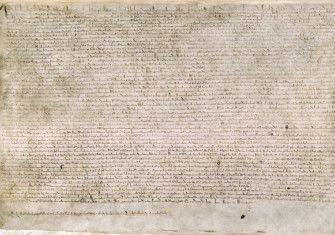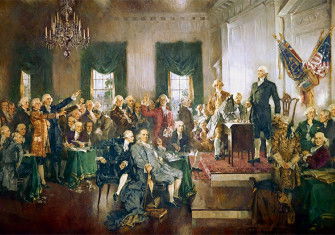Magna Carta: The Atlantic Crossing
In no country is Magna Carta held in greater reverence than in the United States, playing a crucial role in founding the republic’s political and legal system.

Magna Carta holds a place of premier importance in American constitutional history, politics and legal culture. It is perhaps in the US that Magna Carta enjoys the greatest respect today. With the exception of a small plaque laid by the prime minister of India in 1997, the site of Runnymede itself is almost entirely composed of American monuments, from a grand neoclassical rotunda funded by the American Bar Association to the cenotaph commemorating President John F. Kennedy.
Such is America's reverence for the document that in 2007 the US financier David Rubenstein paid $21.3 million (£13.5 million) to obtain a copy for his nation, the highest price ever paid for a single sheet of parchment. Across the US, murals depicting the sealing of Magna Carta at Runnymede decorate the walls of numerous county court houses, where it is displayed as an important symbol of liberty and justice. Its depiction even appears in the United States Supreme Court itself, whose north wall frieze and grand golden doors display several scenes depicting the Charter's story. How did Magna Carta come to America and achieve such prestige?







